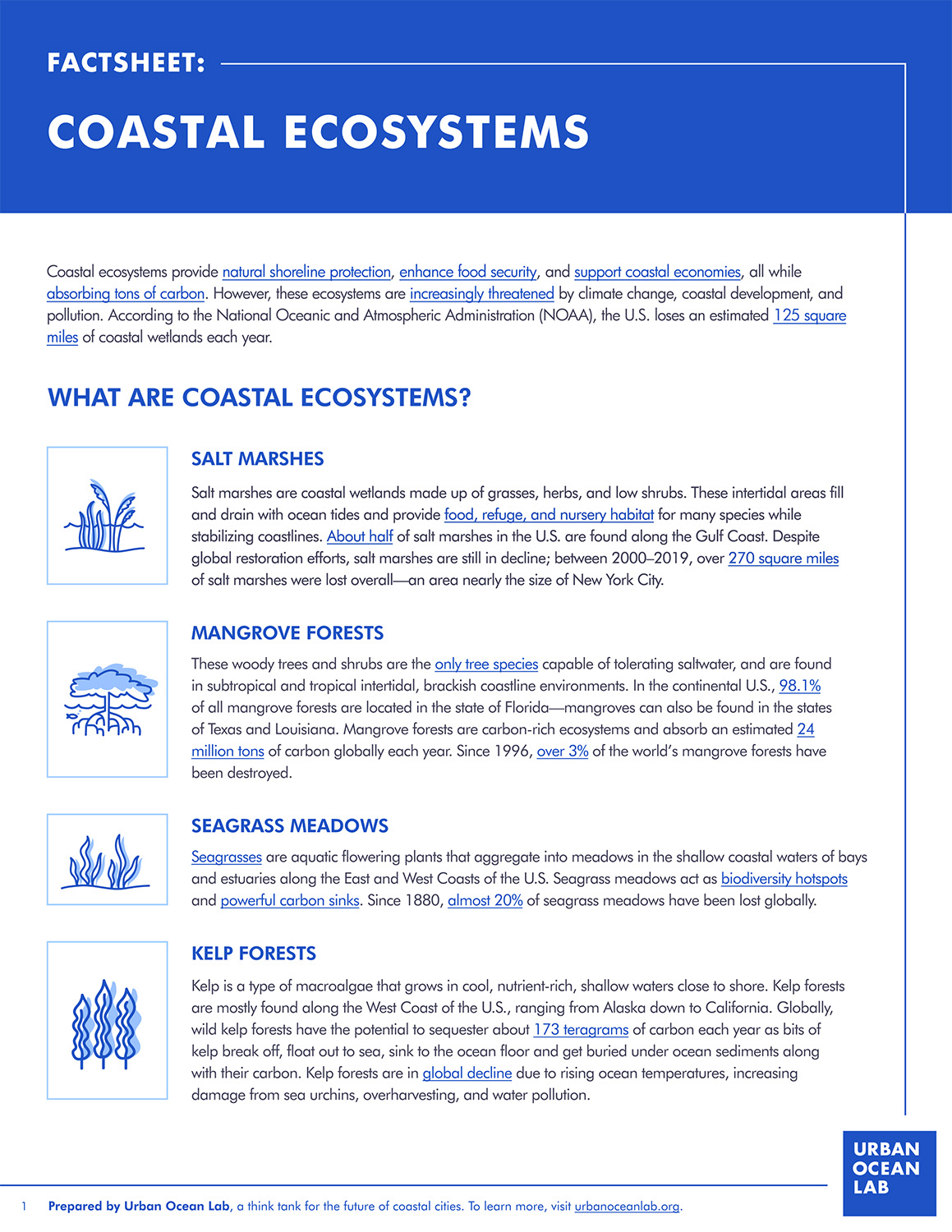Overview
Coastal ecosystems provide natural shoreline protection , enhance food security , and support coastal economies , all while absorbing tons of carbon . However, these ecosystems are increasingly threatened by climate change, coastal development, and pollution. According to the National Oceanic and Atmospheric Administration (NOAA), the U.S. loses an estimated 125 square miles of coastal wetlands each year.
CREATED BY
What can we do?
Protect and restore coastal ecosystems
Funding restoration projects; incorporating nature-based solutions (such as floodplain restoration, greenways, stormwater parks, and bioswales) to absorb and filter stormwater runoff before it can reach coastal ecosystems; creating and maintaining natural infrastructure (such as living shorelines); and establishing marine protected areas help to ensure healthy and functioning coastal ecosystems. The White House recognized the importance of nature-based solutions for coastal ecosystems , and Congress has allocated over $4 billion ($2.6 billion through the Inflation Reduction Act and $1.5 billion through the Climate Ready Coasts Initiative ) specifically for coastal communities to implement nature-based solutions and better protect coastal ecosystems.
Advance regenerative ocean farming
Regenerative ocean farming is a climate-friendly form of aquaculture that has the potential to increase the domestic supply of seaweed and shellfish while improving water quality, mitigating ocean acidification locally , and increasing biodiversity . In addition, scaling regenerative ocean farming has the potential to create up to 50 million direct jobs and 100 million associated jobs globally.
Change land use policies
Review and change land use and zoning policies to adopt setbacks and buffer zones to restrict (re)development in hazardous coastal areas. Land use policies should ensure that development along coastlines reduces soil erosion, maintains permeability and green space, and does not encroach upon coastal ecosystems. In the case of rebuilding after disasters or in high hazard coastal areas, climate-driven relocation of people, homes, and infrastructure away from coastlines might need to be considered for the safety and well-being of coastal communities and ecosystems. It is imperative to prioritize equity in land use planning to avoid climate gentrification and to ensure that all people have equal access to safe and affordable housing, as well as coastal ecosystem services.
Advance blue carbon credits to include all types of coastal ecosystems
In 2016, the U.S. became the first country to include blue carbon in the national greenhouse gas emissions inventory, allowing conservation and restoration efforts in coastal ecosystems to receive carbon credits in the carbon market. Mangrove restoration has the most potential for blue carbon storage. However, expanding the system to include all coastal ecosystems, including salt marshes, seagrasses, kelp forests, oysters, and coral reefs, would accelerate their restoration and help finance coastal resilience projects .
